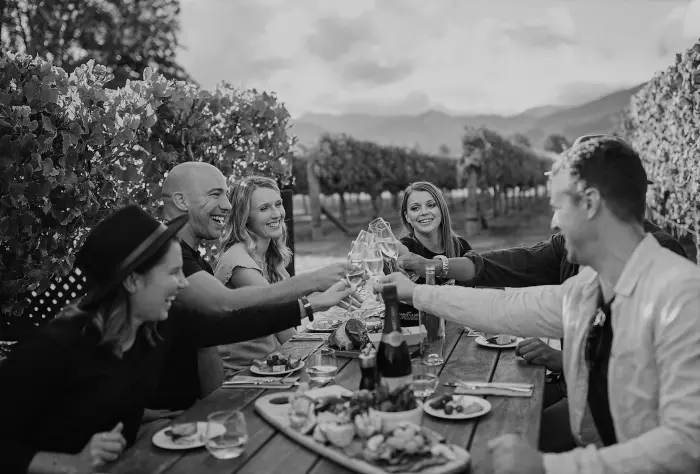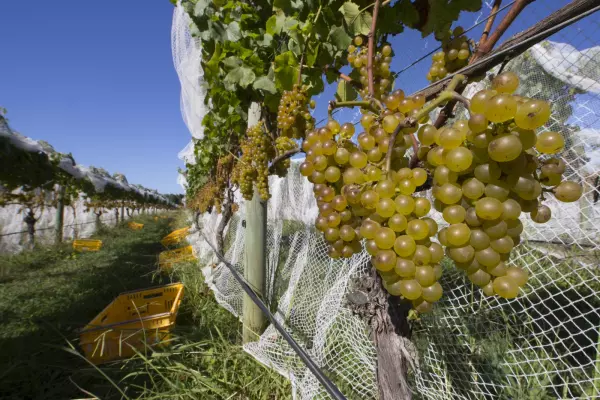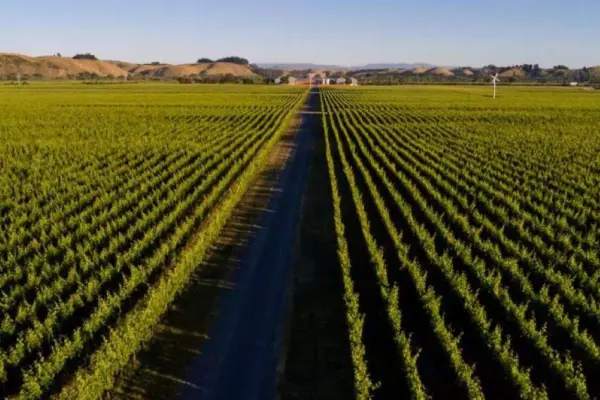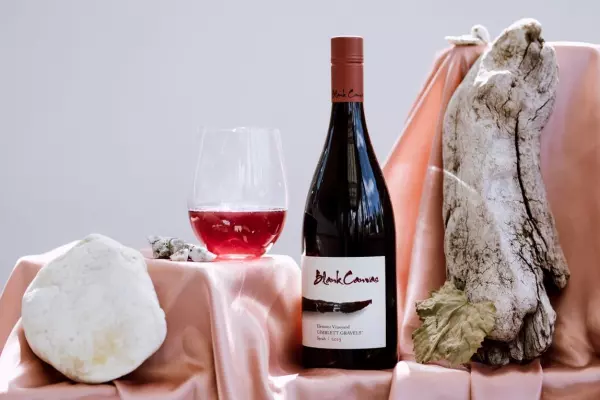Make a note in your diary on Friday, 25 March. It is Méthode Marlborough Day, the perfect excuse, if one was needed, to open a fine bottle of Marlborough méthode and celebrate the end of the sparkling-wine harvest in New Zealand’s largest wine region.
Sparkling-wine grapes are typically harvested before those used to make still wine. Picking the grapes early allows the greener and more restrained fruit flavours to take a back seat to the yeasty/brioche-like characters that develop in the bottle when the wine spends time in contact with the yeast lees left from fermentation. Picking early also ensures good levels of acidity, the “life blood” of bottle-fermented sparkling wines.
What is Méthode Marlborough? It’s a group of quality-conscious producers of bottle-fermented wine who have combined forces to educate consumers and the wine trade on why and how Marlborough sparkling wines differ from other styles. All Méthode Marlborough wines are made using the traditional method, which means the second fermentation is in the bottle, followed by the intricate riddling and disgorging process.
Additionally, the wines are aged for a minimum of 18 months before disgorging takes place, allowing the development of yeasty complexity. On average, Méthode Marlborough members age their sparkling wines for 36 months, but several hit the seven- to 10-year mark. Only the classical grape varieties chardonnay, pinot noir and pinot meunier are allowed to be used.
“Having our fruit tucked up safely in the winery is more than enough reason to celebrate,” says Méthode Marlborough chair Dan Taylor. “But this year, it seems more important to recognise the efforts of our 12 member wineries. The current climate is not sympathetic to industries relying on overseas workers, so it is all the more impressive that, three harvests in, our members remain committed to producing such labour-intensive wines.”
I have selected one wine from each of the 12 members, grouped by style. Enjoy.
Chardonnay dominant
Whitehaven 2018 Samantha Cuvée Méthode Traditionnelle, $40
A blend of chardonnay (70%) and pinot noir aged on the yeast lees in bottle for 22 months. Light, fresh and creamy méthode with lemon, grapefruit, and deliciously bready yeast lees flavours. Good sugar/acid balance with a crisp and pleasantly dry finish.
Esses 2015 Coeur de Cuvée Blanc de Blancs, $65
100% chardonnay with more than 45 months in bottle on the yeast lees. Seductive creamy-textured méthode with grapefruit, freshly baked bread, lemon curd and toasted nut flavours. I particularly like the ripe, fruity acidity. The wine is dry but certainly not austere.
Saint Clair 2018 Dawn, $49.90
A blend of pinot noir (30%) and chardonnay (70%) that spent 30 months in bottle on the yeast lees. Crisp, tangy méthode with fresh yeasty, baguette crust, citrus and green apple flavours.
No 1 Family 2016 Adele Cuvée, $270
Flagship blend of chardonnay (80%) and pinot noir (20%) with 42 months in bottle on the yeast lees. Only made in exceptional vintages (the previous release was in 2013). Rich, creamy wine with delicious brioche/baguette crust and tangy citrus flavours. A very special wine that lives up to its Swarovski-crystal encrusted bottle.
Deutz 2017 Blanc de Blancs Méthode Traditionnelle, $32.99
100% chardonnay. Quite fresh with citrus, toast and bready yeast flavours and a suggestion of oyster shell. Fine, tight, dry sparkling wine with a perfect balance of sweetness and bright acidity. Should develop well with bottle age.
Daniel Le Brun 2013 Blanc de Blancs, $39.99
100% chardonnay. Five years on the lees. Delicious, tantalising sparkling wine with lemon, cream, toast and baguette crust flavours that are beautifully integrated. An ethereal texture adds extra appeal.
Pinot noir dominant
Johanneshof 2011 Emmi Méthode Traditionnelle Brut, $50
A blend of pinot noir (75%) and chardonnay (25%) left on the lees for more than nine years. Strong savoury, bready yeast autolysis with ginger, citrus and stone-fruit flavours. A rich, textural and quite complex sparkler.
Hunter’s 2016 MiruMiru Reserve, $39.90
A pinot noir-dominant blend with chardonnay (36%) and pinot meunier (15%) aged in bottle on the lees for more than three years. Quite champagne-like, with fine, yeasty, baguette crust flavours. An ethereal texture adds appeal. Sophisticated wine.
LV by Louis Vavasour NV, $59
Pinot noir (74.5%) and chardonnay, with 11.6% of reserve wine. Aged for at least 36 months in the bottle on the yeast lees. Crisp, lithe méthode with green apple, oyster shell, citrus and fresh bready lees flavours. Tangy, refreshing wine.
Nautilus NV Brut “Late disgorged after three years”, $38.95
Pinot noir (70%) and chardonnay (30%) aged on the lees for three years. Crisp, flavoursome méthode with a strong yeasty/baguette crust flavour together with toast, hazelnut and citrus characters. Beautifully poised wine with an ethereal texture and lingering finish.
Clos Henri 2019 Chapel Block Blanc de Noirs, $45
100% pinot noir was aged in stainless-steel and old oak barrels for 10 months before a bottle fermentation and further ageing. Mouth-filling wine with cherry/berry and citrus flavours giving a strong fruit emphasis. Appealing and distinctive wine.
Rosé
Tohu 2016 Rewa Méthode Traditionnelle Rosé, $40
100% pinot noir with 26 months on the yeast lees. Rich, broad, and quite soft méthode with strawberry and summer fruit notes indicating unusually ripe fruit. Delicately luscious wine that is a pleasure to taste.
Read more from Bob at therealreview















